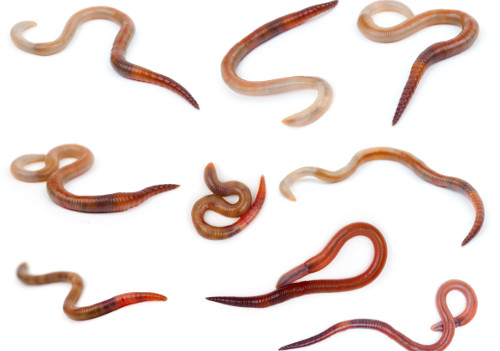Red Wiggler Worms - Perfect for Vermicomposting and Soil Enrichment
Red Wiggler Worms - Perfect for Vermicomposting and Soil Enrichment
Blog Article
Red Wiggler Worms Demystified: Opening the Secrets of Vermiculture for Greener Living and Nutrient-Rich Soil
In the world of lasting methods for enriching dirt top quality and promoting eco-conscious living, red wiggler worms play a crucial yet frequently forgotten duty. These modest creatures possess the impressive capacity to transform natural waste into nutrient-rich spreadings that offer as a potent all-natural fertilizer. By diving into the world of vermiculture, one can discover a myriad of benefits that extend much beyond standard composting methods. Comprehending the complexities of caring for these worms, enhancing their environment, and utilizing their castings can bring about a greener way of living and healthier dirt for plants to thrive.
The Function of Red Wiggler Worms
Red Wiggler worms play an essential role in composting systems by effectively damaging down raw material into nutrient-rich spreadings. These ravenous eaters consume a variety of natural products, such as kitchen scraps, lawn waste, and paper items. As they feed, the worms' gastrointestinal processes damage down the raw material right into a penalty, dark, and nutrient-dense material recognized as worm castings or vermicompost.
The spreadings created by Red Wiggler worms are highly helpful for dirt health and plant development. They are abundant in important nutrients like nitrogen, phosphorus, and potassium, which are important for supporting healthy plant advancement. Additionally, worm spreadings have beneficial microbes and enzymes that help enhance dirt structure, increase water retention, and enhance nutrient uptake by plants.
Advantages of Vermicomposting

Moreover, vermicompost, the nutrient-rich output of vermicomposting, works as an excellent natural plant food and soil conditioner. It boosts soil framework, improves soil aeration, and enhances dirt dampness retention. These residential or commercial properties add to much healthier plants with stronger root systems and far better resistance to insects and conditions. Vermicompost also enhances the dirt with necessary nutrients like potassium, phosphorus, and nitrogen, promoting plant growth and overall soil fertility.
In addition, vermicomposting supports sustainable gardening methods by giving a natural and chemical-free alternative to synthetic fertilizers. Red Wiggler Worms. This environmentally pleasant strategy not just improves the dirt but also helps decrease reliance on unsafe chemicals, advertising a greener and more sustainable way of gardening
Establishing a Worm Container
When establishing a worm bin for vermicomposting, appropriate setup is important to guarantee the success of the composting process. The initial step in setting up a worm container is choosing an appropriate container.
After including the bedding, present the red wiggler worms to the bin. The worms need to then be given with food scraps such as fruit and vegetable peels, coffee premises, and eggshells.
Routinely monitor the dampness levels and temperature level in the worm bin to guarantee ideal problems for the worms. With correct arrangement and maintenance, the worm container will efficiently transform organic waste right into nutrient-rich compost for your plants and garden.
Collecting Worm Castings
To successfully accumulate nutrient-rich worm spreadings from your vermicomposting system, a systematic harvesting technique is important. There are a couple of essential steps to follow to make sure an effective process when it comes time to harvest the worm castings. To start with, quit including fresh food scraps to one side of the worm container for a number of weeks before collecting. This encourages the worms to migrate to the side with fresh bed linen and food, making it much easier to scoop out the castings from the other side.

Troubleshooting Common Issues
Determining and resolving common challenges that might occur throughout the vermicomposting process is important for preserving a healthy and productive worm bin. One common issue that vermicomposters experience is overfeeding. Including excess food scraps can result in a buildup of moisture and level of acidity in the worm bin, potentially damaging the worms. To stop this, feed the worms in moderation, guaranteeing that the food scraps are sufficiently broken down before including a lot more. One more issue is undesirable odors emanating from the worm container. Foul smells indicate anaerobic problems, normally triggered by overwatering or inadequate air flow. To fix this, adjust the wetness levels by including completely dry bedding materials like shredded newspaper or cardboard and rise aeration by turning the bedding frequently.
Furthermore, if the worm populace is declining or the worms show up harmful, maybe because of ecological stressors such as extreme temperature levels or pH levels. Monitoring these elements and making necessary modifications is important for the wellness of the worms. By repairing these typical issues quickly, vermicomposters can make certain a successful and smooth vermicomposting procedure while keeping a flourishing worm populace.

Final Thought
In conclusion, red wiggler worms play an essential role in vermiculture Continued by damaging down natural matter right into nutrient-rich dirt. Setting up a worm container is necessary for successful vermiculture, and harvesting worm spreadings offers valuable garden compost for gardening.
As they feed, the worms' digestive system procedures break down the natural issue into a penalty, dark, and nutrient-dense material recognized as worm spreadings or vermicompost.
The castings generated by Red Wiggler worms are extremely advantageous for dirt health and wellness and plant growth. Including excess useful source food scraps can lead to a buildup of wetness and acidity in the worm container, potentially damaging the worms.Furthermore, if the worm populace is declining or the worms show up unhealthy, it could be due to ecological stressors such as extreme temperatures or pH levels. Establishing up a worm container is necessary for successful vermiculture, and collecting worm castings supplies important garden compost for gardening.
Report this page